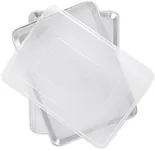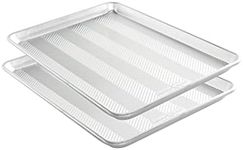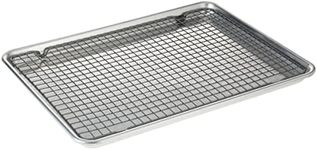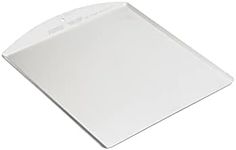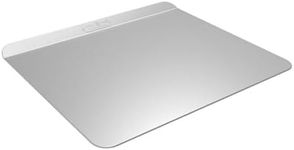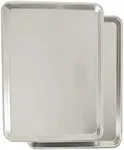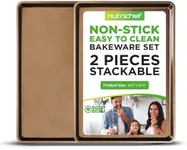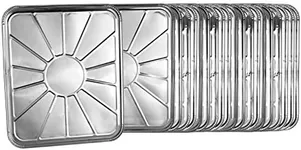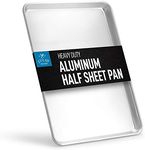Buying Guide for the Best Nordic Ware Cookie Sheets
When it comes to picking the right Nordic Ware cookie sheet, it's important to consider a few key specifications to ensure you get the best fit for your baking needs. Cookie sheets are essential tools in the kitchen, and choosing the right one can make a significant difference in your baking results. Here are some key specs to consider and how to navigate them to find the perfect cookie sheet for you.MaterialThe material of a cookie sheet affects its heat conductivity, durability, and ease of cleaning. Common materials include aluminum, stainless steel, and non-stick coated sheets. Aluminum is known for its excellent heat conductivity and even baking, making it a popular choice. Stainless steel is durable and resistant to rust but may not conduct heat as evenly. Non-stick coatings make cleaning easier and help prevent cookies from sticking, but they can wear off over time. Consider what is most important for your baking style: even baking, durability, or ease of cleaning.
SizeCookie sheets come in various sizes, typically measured in inches. The most common sizes are half-sheet (18x13 inches), quarter-sheet (13x9 inches), and full-sheet (26x18 inches). The size you choose should depend on the amount of baking you do and the size of your oven. A half-sheet is versatile and fits most standard ovens, making it a good all-around choice. Quarter-sheets are great for smaller batches or toaster ovens, while full-sheets are ideal for large batches but require a larger oven. Consider your baking volume and oven size when selecting the right size.
ThicknessThe thickness of a cookie sheet, often referred to as its gauge, affects its durability and heat distribution. Thicker sheets (lower gauge numbers) are more durable and less likely to warp under high heat, providing more even baking. Thinner sheets (higher gauge numbers) may heat up and cool down more quickly but can warp over time. If you bake frequently or at high temperatures, a thicker sheet is a better investment. For occasional baking, a thinner sheet may suffice.
Rimmed vs. RimlessCookie sheets can be either rimmed or rimless. Rimmed sheets have a raised edge around the perimeter, which can help contain spills and make the sheet easier to handle. Rimless sheets allow for better air circulation around the cookies, promoting even baking and easier removal of cookies. If you often bake items that might spill or need to be moved around easily, a rimmed sheet is a good choice. For perfectly even cookies and easy transfer to a cooling rack, a rimless sheet is ideal.
Surface TextureThe surface texture of a cookie sheet can affect how cookies bake and release from the sheet. Some sheets have a textured or dimpled surface, which promotes better air circulation and can help prevent sticking. Smooth surfaces are easier to clean but may require more careful greasing or the use of parchment paper to prevent sticking. If you prefer low-maintenance baking, a textured surface might be beneficial. For those who prioritize easy cleaning, a smooth surface is preferable.
